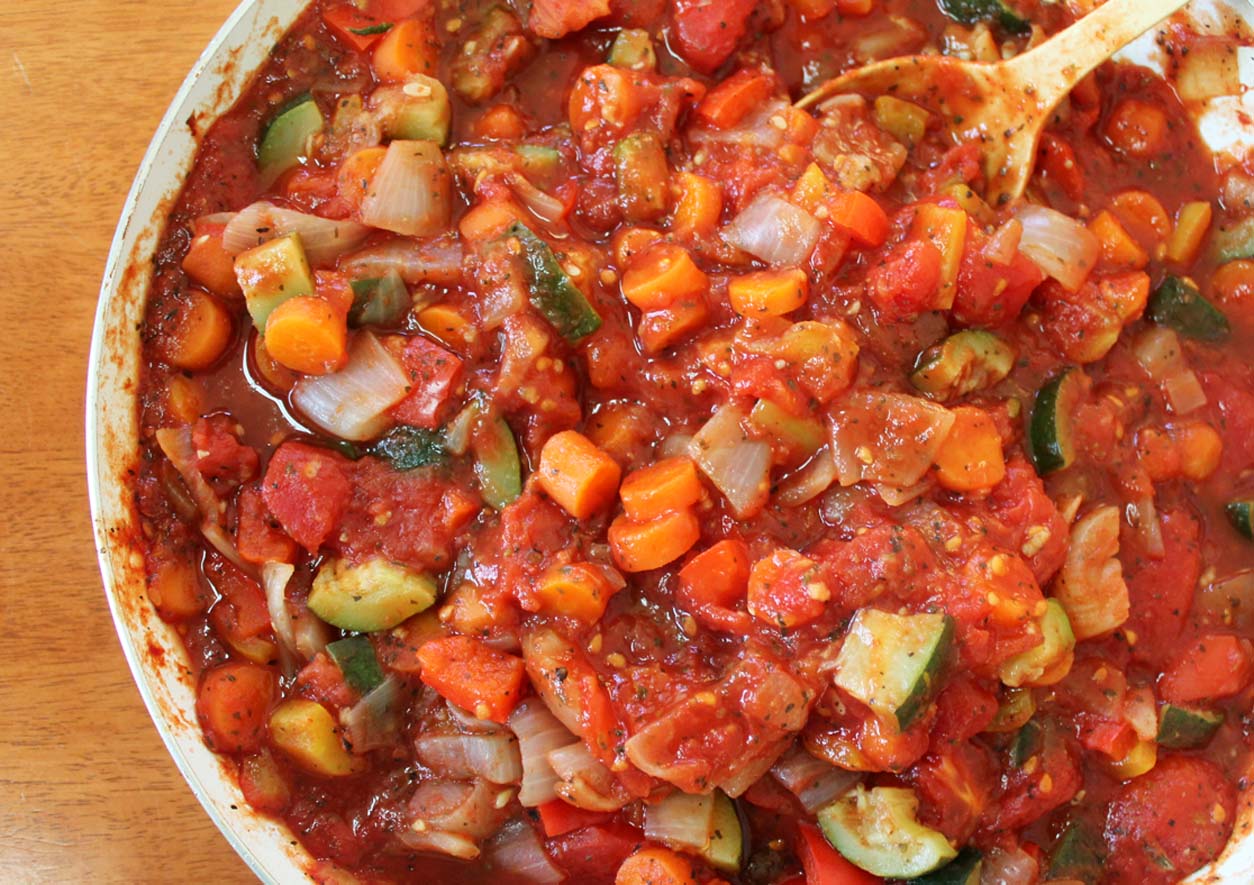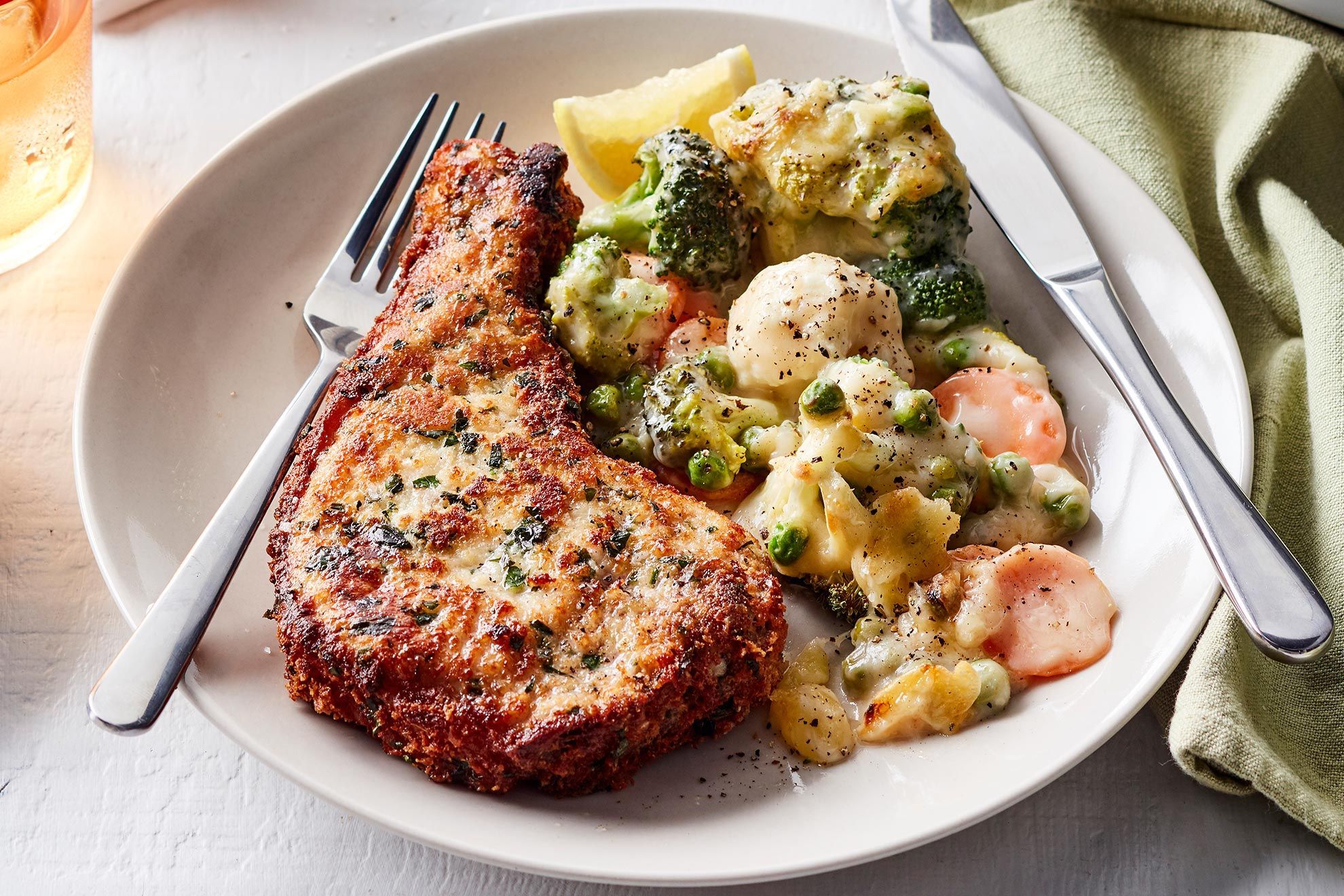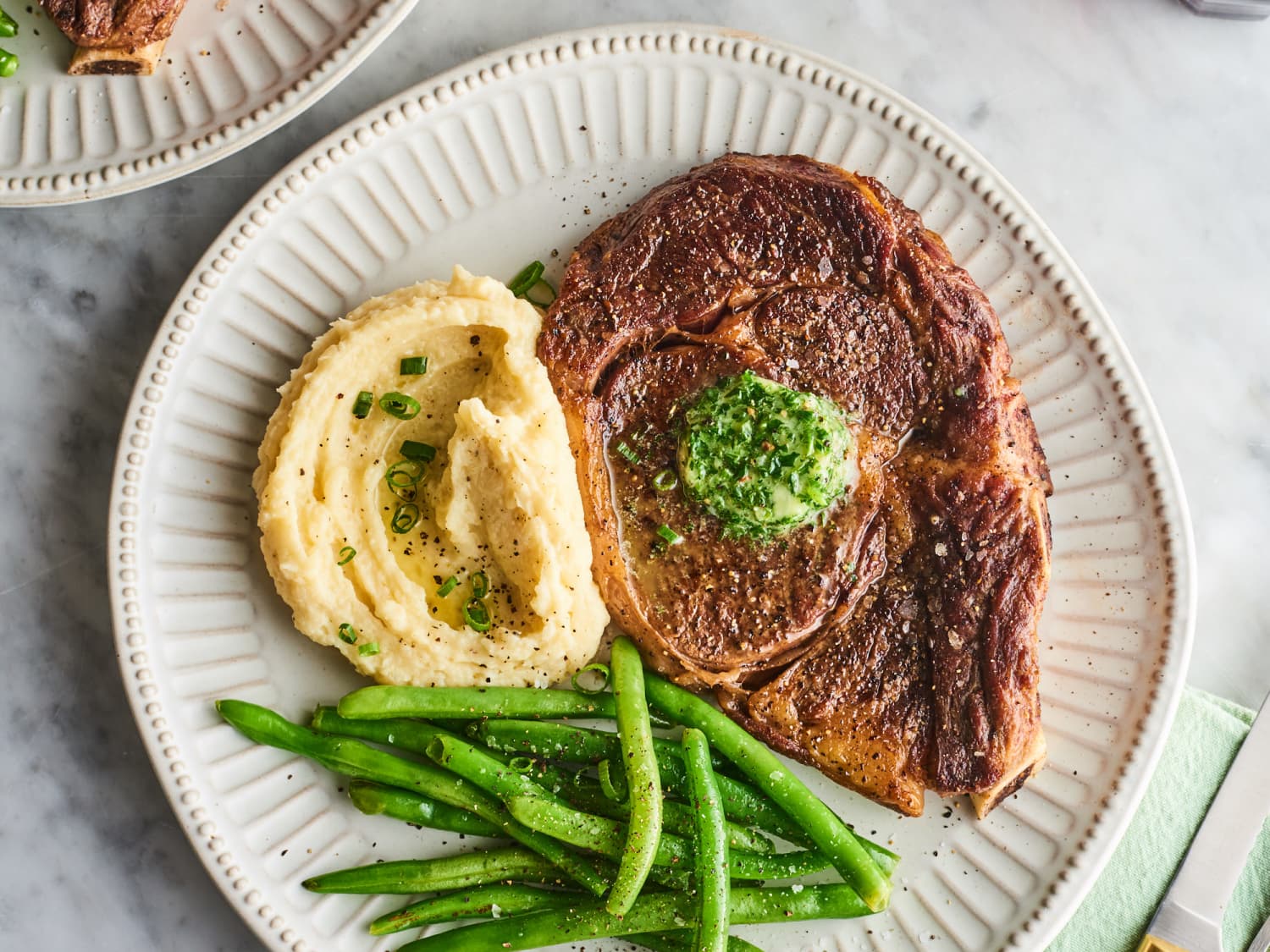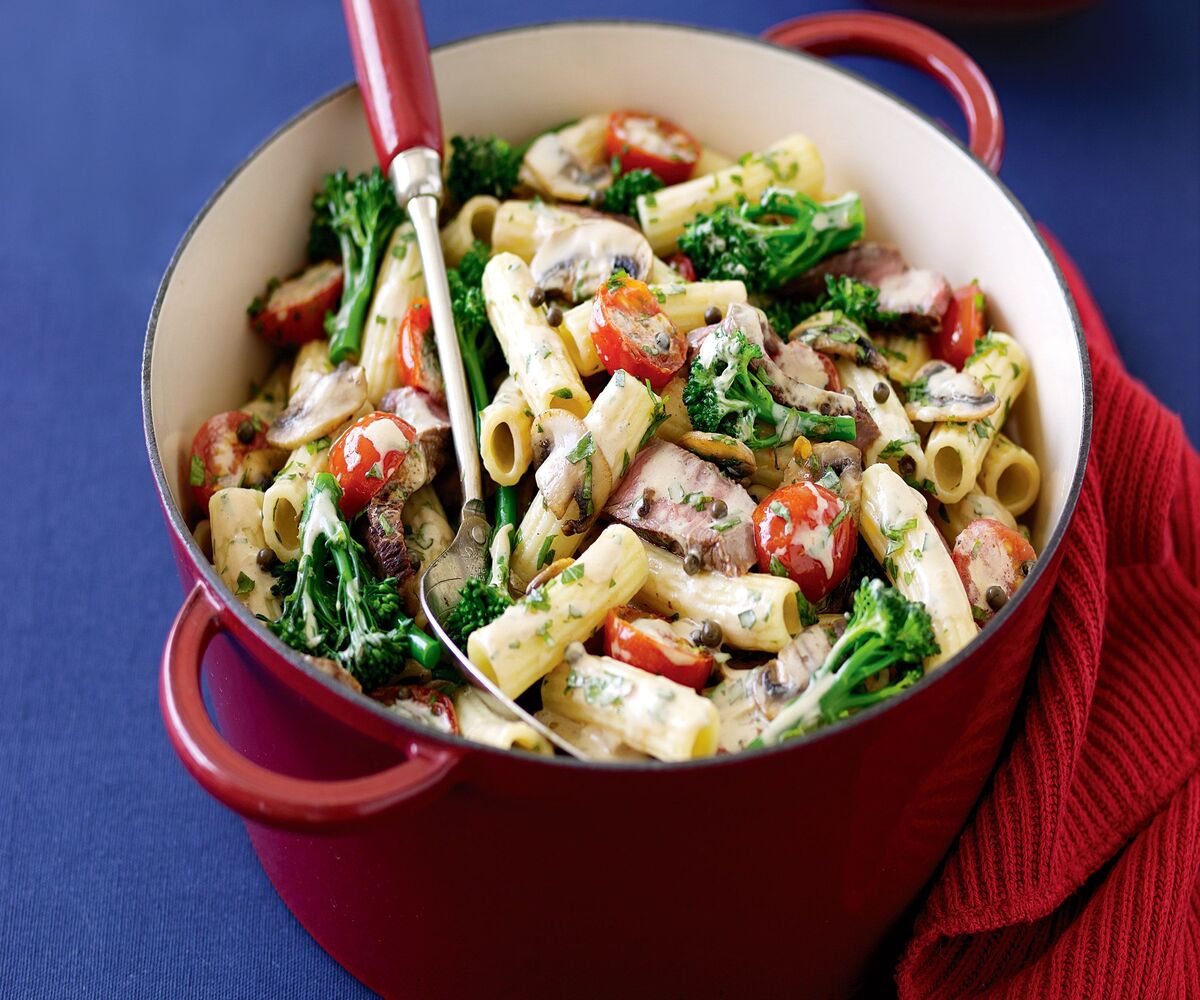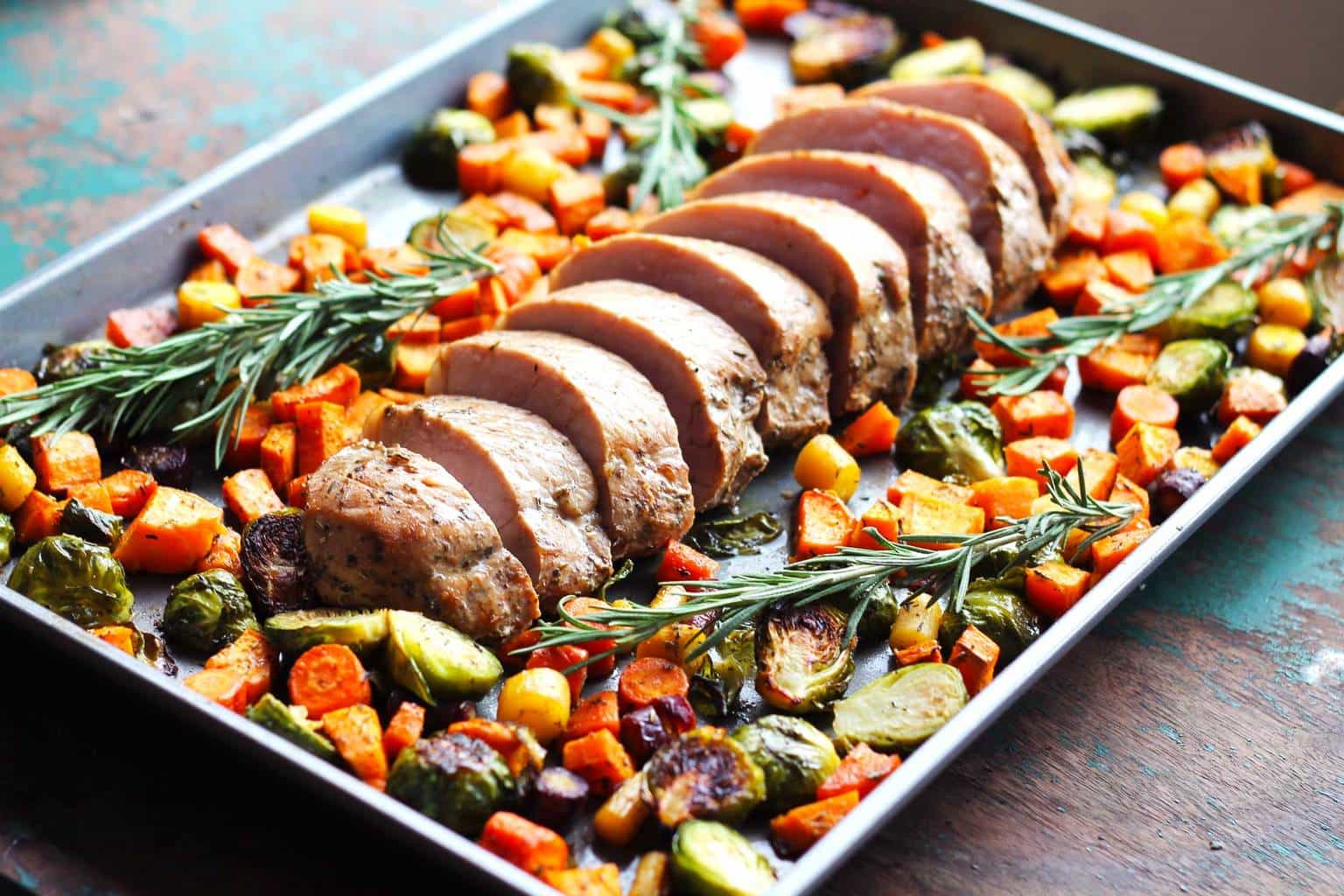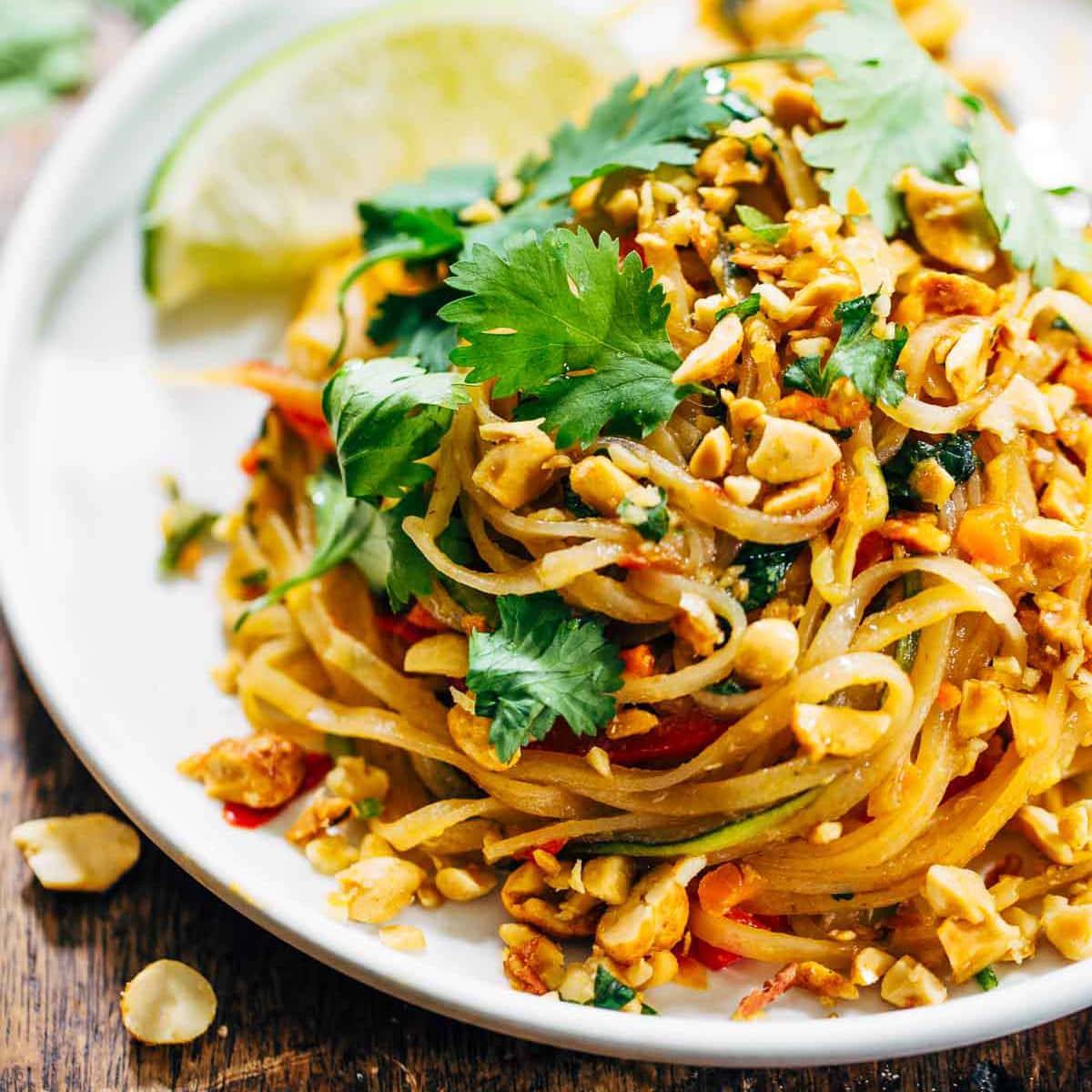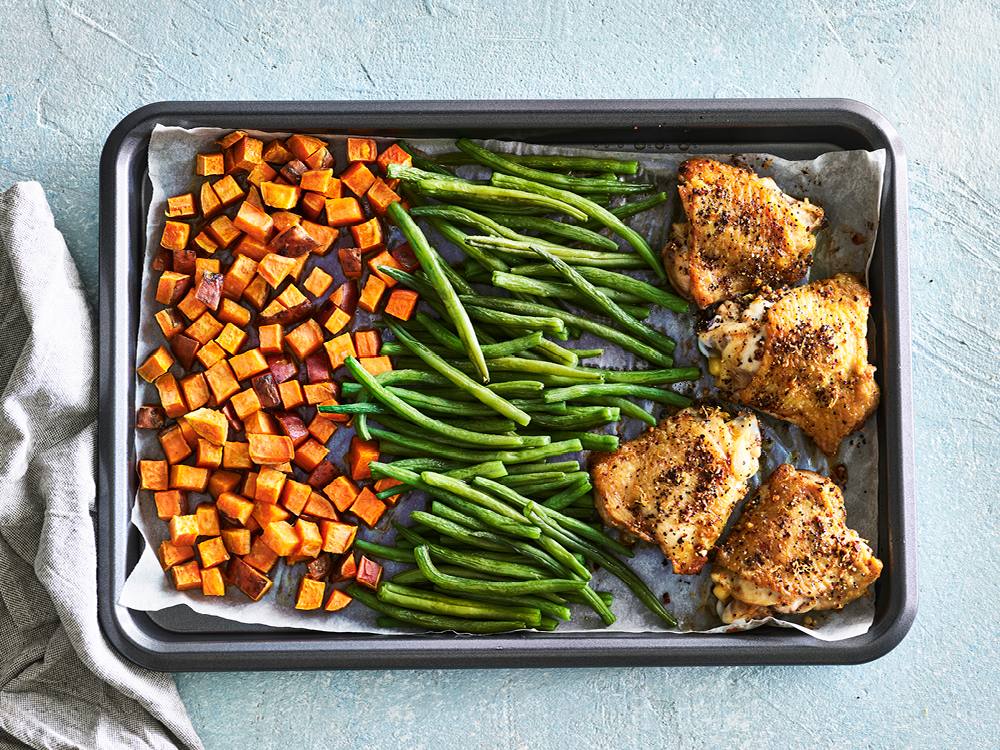Home>Gardening News and Trends>Latest News>What Vegetables Go On Kabobs
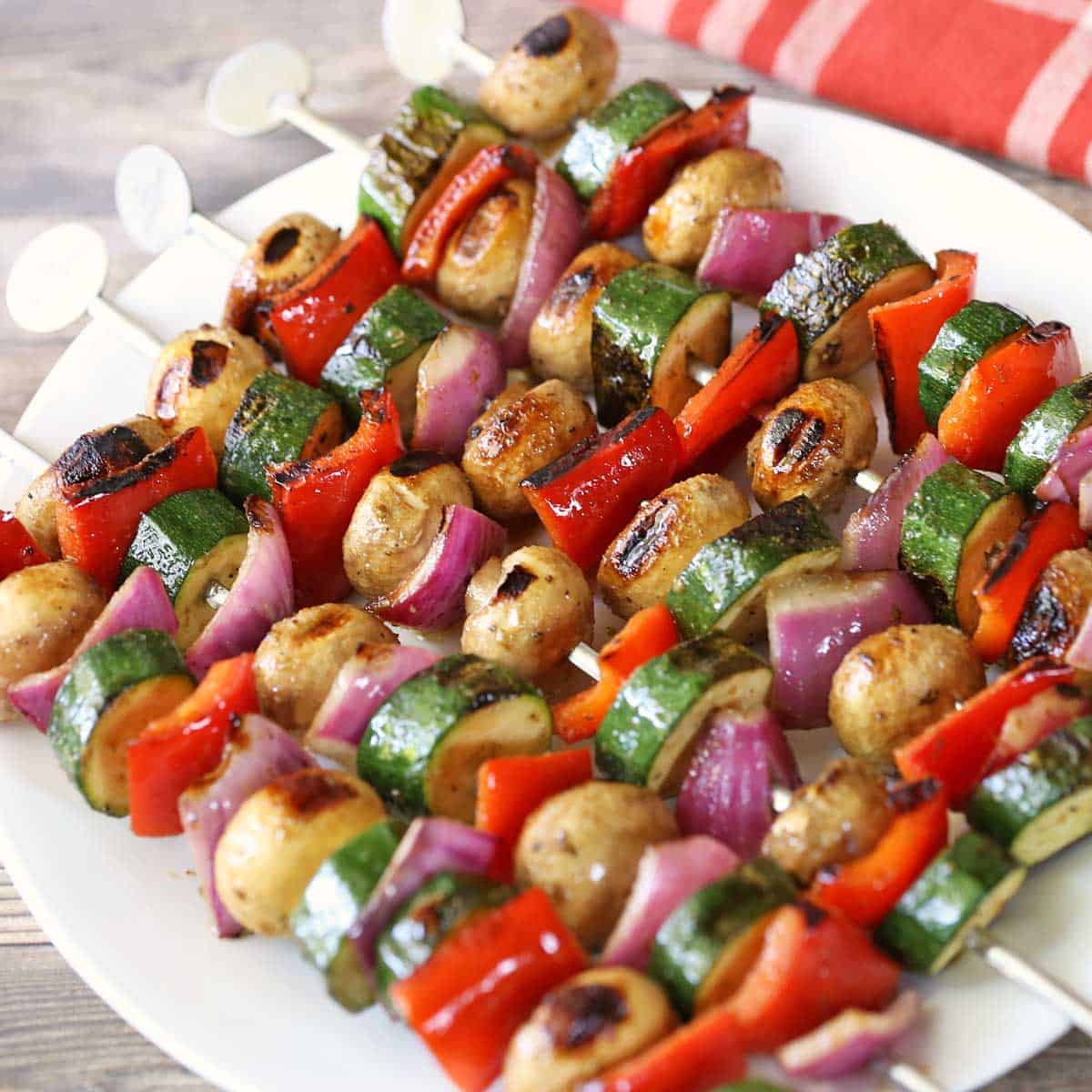

Latest News
What Vegetables Go On Kabobs
Modified: January 22, 2024
Discover the latest news on what vegetables go on kabobs and get inspired to create delicious and healthy grilled skewers for your next barbecue.
(Many of the links in this article redirect to a specific reviewed product. Your purchase of these products through affiliate links helps to generate commission for Chicagolandgardening.com, at no extra cost. Learn more)
Table of Contents
- Introduction
- Grilled Vegetable Kabobs: A Versatile Option
- Choosing Vegetables for Kabobs
- Best Vegetables for Grilling Kabobs
- How to Prepare Vegetables for Kabobs
- Seasoning and Marinating Vegetables for Kabobs
- Tips for Assembling and Grilling Kabobs
- Alternative Options for Grilled Vegetable Kabobs
- Conclusion
Introduction
Grilled vegetable kabobs are a delicious and healthy option for those who want to add a burst of flavor to their outdoor grilling experience. Whether you’re a vegetarian looking for a flavorful alternative to meat-based kabobs or simply want to incorporate more vegetables into your diet, kabobs are a versatile and satisfying option.
One of the best things about grilled vegetable kabobs is the endless variety of flavors and textures that can be achieved by using different vegetables. From crunchy bell peppers to tender zucchini and smoky eggplant, the combinations are limited only by your imagination. These colorful and vibrant kabobs not only make for a visually appealing dish but also pack a nutritional punch, making them a popular choice among health-conscious individuals.
Grilling vegetables on kabobs not only adds a distinct smoky flavor but also helps to retain their natural juiciness and nutrients. The high heat of the grill caramelizes the sugars in the vegetables, creating a delightful sweetness and intensifying their natural flavors. With the right combination of seasonings and a bit of marinating, you can take your grilled vegetable kabobs to a whole new level of taste and satisfaction.
In this article, we will explore the art of grilling vegetable kabobs, from choosing the right vegetables to seasoning and marinating them for maximum flavor. We will also provide tips on assembling and grilling kabobs to ensure perfectly cooked vegetables every time. Additionally, we will offer some alternative options for those looking to mix things up and experiment with different ingredients.
So, whether you’re a seasoned grilling pro or a novice looking to try something new, join us as we dive into the world of grilled vegetable kabobs and discover a whole new level of culinary delight. Get ready to ignite your taste buds and elevate your grilling game with these mouthwatering and nutritious kabobs!
Grilled Vegetable Kabobs: A Versatile Option
Grilled vegetable kabobs are not only a delicious and healthy choice, but they also offer endless versatility when it comes to flavor combinations and ingredient choices. Whether you’re catering to vegetarians or simply want to add more veggies to your grilling repertoire, kabobs are a fantastic option.
One of the greatest advantages of grilled vegetable kabobs is their ability to make even the simplest vegetables burst with flavor. As you thread your favorite vegetables onto skewers and expose them to the heat of the grill, their natural sugars caramelize, creating a delightful sweetness that pairs perfectly with the smokiness from the grill. From bell peppers and zucchini to cherry tomatoes and mushrooms, the possibilities are endless when it comes to the vegetables you can use.
Not only do grilled vegetable kabobs add a vibrant pop of color to your plate, but they also provide a variety of textures. The heat of the grill can transform crunchy vegetables like bell peppers and onions into beautifully charred morsels, while softer vegetables such as mushrooms and cherry tomatoes retain their juiciness and become even more flavorsome. This contrast in textures adds interest and depth to each bite, making every kabob a delightful medley of flavors and sensations.
Furthermore, grilled vegetable kabobs provide a nutritious and low-calorie option for those seeking healthier alternatives to traditional meat-centric dishes. Vegetables are packed with essential vitamins, minerals, and dietary fiber, making them an excellent choice for maintaining a balanced diet. Grilling vegetables retains their nutritional value while also adding a unique charred flavor that enhances their natural taste.
The versatility of grilled vegetable kabobs extends beyond the vegetables themselves. You can also experiment with different marinades, seasonings, and sauces to take your kabobs to the next level. From tangy citrus-infused marinades to bold and savory spice rubs, there are countless options to elevate the flavor profile of your kabobs. You can even customize each skewer to suit individual preferences, ensuring that everyone at your barbecue is satisfied.
Whether you’re hosting a summer cookout, attending a potluck, or simply enjoying a quiet evening on your patio, grilled vegetable kabobs are a fantastic option that caters to a range of tastes and dietary preferences. From their versatility and visual appeal to their nutritional benefits, kabobs are a winning choice for any occasion.
So, fire up the grill, gather an array of colorful vegetables, and embark on a culinary journey that celebrates the deliciousness of grilled vegetable kabobs. Get creative, experiment with different flavors, and enjoy the sheer joy that comes from indulging in a healthy and satisfying meal. Your taste buds and your guests will thank you!
Choosing Vegetables for Kabobs
When it comes to creating the perfect grilled vegetable kabobs, choosing the right vegetables is key. It’s important to select vegetables that have a good balance of flavors, textures, and cooking times to ensure that each kabob is a delectable masterpiece. Here are some factors to consider when choosing vegetables for your kabobs.
1. Variety: Incorporating a variety of vegetables adds visual interest and flavor complexity to your kabobs. Aim for a mix of colors, such as vibrant red and yellow bell peppers, earthy mushrooms, and green zucchini. This not only enhances the aesthetics of your kabobs but also ensures a diverse range of flavors.
2. Texture: Consider the texture of the vegetables to create a more enjoyable eating experience. Choose a combination of crisp and soft vegetables to give your kabobs a pleasing contrast. For example, include crunchy bell peppers and onions alongside tender mushrooms and eggplant.
3. Cooking Time: Pay attention to the cooking time of different vegetables to ensure even cooking across the skewer. Vegetables with similar cooking times can be grilled together, while those with longer cooking times may need to be precooked or placed on separate skewers. This prevents undercooked or overcooked vegetables.
4. Size: Cut the vegetables into uniform sizes to ensure that they cook evenly. This is especially important when you have a mix of vegetables with varying densities. Larger and denser vegetables, such as potatoes or winter squash, should be cut into smaller pieces to ensure they cook through.
5. Sturdiness: Choose vegetables that are sturdy enough to hold up to grilling without falling apart. Delicate vegetables like cherry tomatoes or leafy greens can be added towards the end of grilling or cooked separately in a grill basket or foil packet to prevent them from turning mushy.
Some popular vegetables that work well for kabobs include bell peppers, onions, zucchini, cherry tomatoes, mushrooms, eggplant, and yellow squash. These vegetables offer a wide range of flavors and textures that complement each other perfectly when grilled.
Remember to consider personal preferences and dietary restrictions when selecting vegetables for your kabobs. If you’re catering to a specific diet, such as vegan or gluten-free, ensure that all the vegetables you choose align with those requirements.
By carefully selecting a variety of vegetables, you can create delicious and visually appealing kabobs that are bursting with flavor and texture. So head to your local farmers market or grocery store, pick out your favorite vegetables, and get ready to create a stunning array of grilled vegetable kabobs that will impress your guests and satisfy even the pickiest eaters.
Best Vegetables for Grilling Kabobs
When it comes to grilling vegetable kabobs, there are certain vegetables that truly shine on the grill, enhancing the flavors and textures of the dish. Here are some of the best vegetables to include in your grilled kabobs:
1. Bell Peppers: Bell peppers are a staple for vegetable kabobs, adding a vibrant burst of color and a sweet, smoky flavor. They hold their shape well during grilling and develop a slightly charred exterior, adding a delicious depth of flavor.
2. Onions: Whether you choose red onions, white onions, or sweet onions, they all bring a rich and savory taste to your kabobs. Onions become tender and slightly caramelized when grilled, adding a delectable sweetness to the overall dish.
3. Zucchini and Yellow Squash: These summer squashes grill beautifully, imparting a buttery and slightly smoky flavor. Cut them into rounds or thick slices and grill until they are tender but still retain their shape.
4. Mushrooms: Mushrooms, such as cremini or portobello, are perfect for adding a meaty texture to your vegetable kabobs. They absorb flavors well and become juicy and succulent when grilled.
5. Cherry Tomatoes: Bursting with a juicy sweetness, cherry tomatoes are a delightful addition to kabobs. They add a bright pop of color and provide a burst of tanginess when you bite into them.
6. Eggplant: With its creamy texture and mild flavor, grilled eggplant adds a luxurious touch to kabobs. Slice the eggplant and grill until it becomes tender and develops a slightly smoky taste.
7. Asparagus: Asparagus spears are not only packed with nutrients, but they also grill beautifully. They become tender yet still retain a satisfying crunch, and their natural flavors become more pronounced.
8. Pineapple: While not a vegetable, pineapple adds a touch of sweetness and tropical flair to your kabobs. The natural sugars in the pineapple caramelize on the grill, creating a delightful caramelized flavor.
Remember to consider seasonality and availability when selecting vegetables for your kabobs. Opt for fresh, local produce whenever possible to ensure the best quality and flavor.
By combining these vegetables in different combinations, you can create a medley of flavors and textures that will satisfy even the most discerning palates. Feel free to mix and match the vegetables to create your own unique kabob recipes!
Experiment with different seasoning blends and sauces to further elevate the flavors of your grilled vegetable kabobs. From simple salt and pepper to herb-infused marinades, the possibilities are endless.
With these delicious vegetables at your disposal, your grilled vegetable kabobs are sure to become a favorite at backyard barbecues, potlucks, and family gatherings. So fire up the grill and get ready to impress your friends and family with these tantalizing and wholesome kabobs.
How to Prepare Vegetables for Kabobs
Preparing vegetables for grilled kabobs is an important step to ensure even cooking, maximum flavor absorption, and enjoyable eating experience. Here are some tips on how to properly prepare vegetables for your kabobs:
1. Clean and Wash: Begin by cleaning the vegetables thoroughly under running water. Remove any dirt, debris, or pesticide residue. For vegetables with tougher skins, such as bell peppers or zucchini, use a vegetable brush to ensure a thorough cleaning.
2. Cut into Even Pieces: To promote even cooking, cut the vegetables into uniform sizes. Aim for pieces that are approximately 1 to 1.5 inches in diameter. This ensures that the vegetables cook at the same rate and provide a consistent texture throughout the kabob.
3. Remove Seeds and Cores: For vegetables like bell peppers or tomatoes, remove the seeds and inner membrane to avoid any bitterness. For larger vegetables like eggplant or zucchini, remove the seeds if they are large and mature, as they can be tough and affect the texture of the dish.
4. Skewer-Friendly Shapes: Cut the vegetables into shapes that are suitable for skewers. Cubes or thick slices work well for most vegetables, as they are easy to thread onto the skewer and provide a good surface area for grilling. Avoid cutting the pieces too small, as they may fall through the grill grates.
5. Use Marinades and Seasonings: To enhance the flavor of the vegetables, consider marinating them before grilling. A simple marinade of oil, vinegar or lemon juice, herbs, and spices can work wonders. Allow the vegetables to marinate for at least 30 minutes, or up to a few hours, in the refrigerator for optimal flavor infusion.
6. Precooking for Denser Vegetables: For vegetables that take longer to cook, such as potatoes or winter squash, consider precooking them partially before grilling. This can be done by steaming, parboiling, or microwaving them until they are slightly tender. Precooking helps to ensure that denser vegetables cook through while grilling without burning the outside.
7. Brush with Oil: Before grilling, lightly brush the vegetables with oil to prevent them from sticking to the grill grates. This also helps to enhance the caramelization and adds a touch of richness to the vegetables.
By following these preparation steps, you will ensure that your vegetables are ready to be threaded onto skewers and grilled to perfection. The result will be flavorful and tender vegetables that are a delight to eat. So grab your cutting board, prepare those veggies, and get ready to create the ultimate grilled vegetable kabobs that will impress everyone around the barbecue.
Seasoning and Marinating Vegetables for Kabobs
To elevate the flavor of your grilled vegetable kabobs, seasoning and marinating the vegetables is essential. This step not only adds depth of taste but also helps to infuse the vegetables with various flavors. Here are some tips on how to season and marinate your vegetables for kabobs:
1. Salt and Pepper: Start with the basics – salt and pepper. Sprinkle a pinch of salt and a generous amount of freshly ground black pepper over the vegetables before grilling. This simple seasoning enhances the natural flavors of the vegetables and adds a touch of savory goodness.
2. Herb and Spice Blends: Experiment with different herb and spice blends to add complexity and depth to your kabobs. Popular options include Italian seasoning, garlic powder, paprika, cumin, or chili powder. Sprinkle the desired spices over the vegetables before grilling or incorporate them into a marinade.
3. Olive Oil or Vegetable Oil: Drizzle the vegetables with a high-quality olive oil or vegetable oil to help prevent them from drying out during grilling. The oil also aids in browning and caramelization, adding a luscious richness to the kabobs.
4. Acidic Marinades: For a tangy and bright flavor, use acidic ingredients such as citrus juice (lemon, lime, or orange), vinegar (balsamic, red wine, or apple cider), or yogurt as a base for your marinade. These acidic elements not only impart flavor but also help to tenderize the vegetables.
5. Fresh Herbs and Aromatics: Add a burst of freshness and aromatics by incorporating fresh herbs and spices into your marinade. Choices like basil, cilantro, rosemary, thyme, or minced garlic bring a delightful fragrance and depth of flavor to the vegetables.
6. Sweet and Savory Marinades: For a touch of sweetness, consider including ingredients like honey, maple syrup, or brown sugar in your marinade. This balances out the flavors and creates a beautiful caramelized glaze on the grilled vegetables.
7. Marinating Time: Allow the vegetables to marinate for at least 30 minutes in the refrigerator before grilling. However, if you have the time, marinating for several hours, or even overnight, can intensify the flavors and tenderize the vegetables even further.
It’s important to note that delicate vegetables like cherry tomatoes, mushrooms, and leafy greens should be marinated for a shorter period or even added to the skewers without marinade to maintain their texture.
Remember to taste-test and adjust the seasoning and marinade according to your preference. Don’t be afraid to get creative and customize your own marinades based on your favorite flavors.
By seasoning and marinating your vegetables before grilling, you enhance their natural flavors and add layers of complexity to your kabobs. The result is a tantalizing medley of tastes and aromas that will impress your family and friends. So, go ahead, mix up those spices, oils, and herbs, and let your vegetables soak in the flavors before hitting the grill. Your taste buds will thank you!
Tips for Assembling and Grilling Kabobs
Assembling and grilling vegetable kabobs may seem simple, but there are a few tips and tricks that can take your kabob game to the next level. From the order of vegetables on the skewers to proper grilling techniques, here are some essential tips to ensure perfectly cooked and flavorful kabobs:
1. Soak Wooden Skewers: If you’re using wooden skewers, soak them in water for at least 30 minutes before assembling the kabobs. This prevents them from burning or charring too quickly on the grill.
2. Preheat the Grill: Make sure the grill is preheated to medium-high heat before you start grilling the kabobs. This ensures a good sear and allows for even cooking.
3. Alternate Vegetables: Assemble the kabobs by alternating the vegetables on the skewers. This not only adds visual appeal but also ensures that different flavors blend together nicely. Experiment with different combinations, but try to balance textures and cooking times.
4. Leave Space Between Vegetables: Leave space between each piece of vegetable on the skewer to allow for proper heat circulation and even cooking. This ensures that each vegetable gets the ideal amount of char and tenderness.
5. Brush with Marinade or Oil: Before placing the kabobs on the grill, brush them with any remaining marinade or a light coat of oil. This helps to prevent sticking and adds extra flavor and moisture to the vegetables during grilling.
6. Cook with Indirect Heat: To avoid burning the vegetables, cook the kabobs using indirect heat. This means placing the skewers away from direct flames or too-high heat. This allows for even cooking without excessive charring.
7. Adjust Cooking Time: Remember that different vegetables have different cooking times. Some vegetables, like bell peppers and onions, take longer to cook, while others, like cherry tomatoes or mushrooms, cook more quickly. Monitor the kabobs closely and adjust the cooking time accordingly to ensure that all the vegetables are cooked to perfection.
8. Grill Basket or Foil Packets: For delicate vegetables or smaller pieces that may fall through the grill grates, consider using a grill basket or foil packets. These allow you to grill the vegetables without worrying about them falling apart or getting charred.
9. Rotate Skewers: As you grill the kabobs, rotate the skewers to ensure that each side gets an even distribution of heat. This helps to promote even cooking and prevent any vegetables from burning.
10. Use a Meat Thermometer: If you’re grilling a mix of vegetables and meat on the same skewers, use a meat thermometer to ensure that the meat reaches the proper internal temperature while avoiding overcooking the vegetables.
By following these tips, your grilled vegetable kabobs will turn out beautifully charred, flavorful, and perfectly cooked. The combination of well-seasoned vegetables and proper grilling techniques will result in a dish that will impress your guests and leave them craving for more.
So, gather your skewers, fire up the grill, and enjoy the process of assembling and grilling your vegetable kabobs. With a little attention to detail, you’ll create a masterpiece that showcases the fantastic flavors, colors, and textures of grilled vegetables.
Alternative Options for Grilled Vegetable Kabobs
While traditional vegetable kabobs are delicious and versatile, there are alternative options that can add a unique twist to your grilling experience. These alternatives expand your culinary horizons and give you a chance to explore different flavors and combinations. Here are a few options to consider:
1. Fruit Kabobs: Grilling fruit adds a delightful caramelized sweetness and smoky depth to their natural flavors. Pineapple, peaches, watermelon, and even grapes are excellent choices for grilled fruit kabobs. The heat of the grill transforms the fruit, creating a delicious blend of sweet and savory notes.
2. Tofu or Tempeh Kabobs: For a vegetarian or vegan alternative to traditional vegetable kabobs, incorporate tofu or tempeh into your skewers. These plant-based proteins absorb flavors well and become beautifully charred when grilled. Marinate them in your favorite seasonings to infuse them with taste before grilling.
3. Halloumi Kabobs: Halloumi, a firm and salty cheese with a high melting point, is perfect for grilling. Slice it into thick pieces and thread it onto skewers alongside vegetables. The heat of the grill gives halloumi a lovely crust while maintaining its chewy texture and delicious flavor.
4. Herb and Cheese Stuffed Mushrooms: Take your vegetable kabobs to the next level by adding a savory twist. Stuff large mushroom caps with a mixture of herbs, cheese, and breadcrumbs. Grill them on skewers or in a grill basket until the cheese is melted and bubbly.
5. Portobello Mushroom Burgers: Instead of using vegetables as kabobs, make portobello mushroom burgers. Marinate the mushrooms in a blend of balsamic vinegar, soy sauce, and garlic, then grill them until tender. Serve them on buns with your favorite toppings for a satisfying plant-based burger option.
6. Grilled Wrap Skewers: Take a new approach by wrapping grilled vegetables in tortillas or flatbreads and skewering them to create grilled wrap skewers. Fill the wraps with grilled vegetables, hummus, shredded cheese, and herbs, and then grill them until the tortillas are crispy.
7. Stuffed Bell Peppers: Instead of threading individual vegetables onto skewers, stuff bell peppers with a mixture of cooked grains (such as quinoa or couscous), cheese, and herbs. Grill them until the peppers are tender and the filling is heated through.
By exploring these alternative options, you can add a unique flair to your grilling repertoire. They offer new flavors, textures, and combinations that are sure to impress your guests and elevate your outdoor cooking experience. So don’t be afraid to think outside the box and get creative with your grilled vegetable kabobs!
Remember to incorporate your favorite seasonings, marinades, and sauces to enhance the flavors of these alternative options. The possibilities are endless, so embrace the opportunity to experiment and create an unforgettable grilled meal.
Conclusion
Grilled vegetable kabobs offer a delicious and versatile option for adding flavor, color, and nutrition to your outdoor grilling experience. The combination of fresh, vibrant vegetables, thoughtful seasoning, and proper grilling techniques can elevate simple ingredients into a mouthwatering culinary masterpiece.
By carefully selecting vegetables that complement each other in terms of flavors, textures, and cooking times, you can create kabobs that are bursting with taste. Bell peppers, onions, zucchini, mushrooms, cherry tomatoes, and eggplant are just a few examples of the vegetables that work exceptionally well on the grill. These vegetables come alive with a touch of char and smokiness, while still retaining their unique qualities.
Properly preparing the vegetables by cleaning, cutting them into uniform pieces, and marinating or seasoning them before grilling ensures that they are tender, flavorful, and evenly cooked. Soaking wooden skewers, preheating the grill, and using indirect heat are essential techniques to achieve perfectly grilled kabobs every time.
While traditional vegetable kabobs are fantastic, it’s worth exploring alternative options to keep your grilling adventures exciting and varied. Grilled fruit kabobs, tofu or tempeh skewers, halloumi kabobs, and stuffed mushrooms or bell peppers offer a whole new world of flavors and textures to explore.
No matter which vegetables or alternative options you choose, the key to sensational grilled vegetable kabobs lies in the balance of flavors, vibrant colors, and the artful execution of grilling techniques. This versatile and nutritious dish is perfect for summer gatherings, backyard barbecues, and even weeknight meals.
So, whether you’re a vegetarian in search of a delectable and satisfying meal or simply want to incorporate more vegetables into your diet, give grilled vegetable kabobs a try. Let your creativity soar as you experiment with different vegetable combinations, seasonings, and marinades. With these tips and techniques in mind, you’re ready to embark on a grilling journey that will tantalize your taste buds and impress your loved ones.
So fire up the grill, gather your favorite vegetables, and get ready to savor the smoky, juicy, and flavorful bite of grilled vegetable kabobs. Enjoy the process, embrace the versatility, and let the vibrant colors and enticing aromas make your outdoor grilling experience unforgettable!

